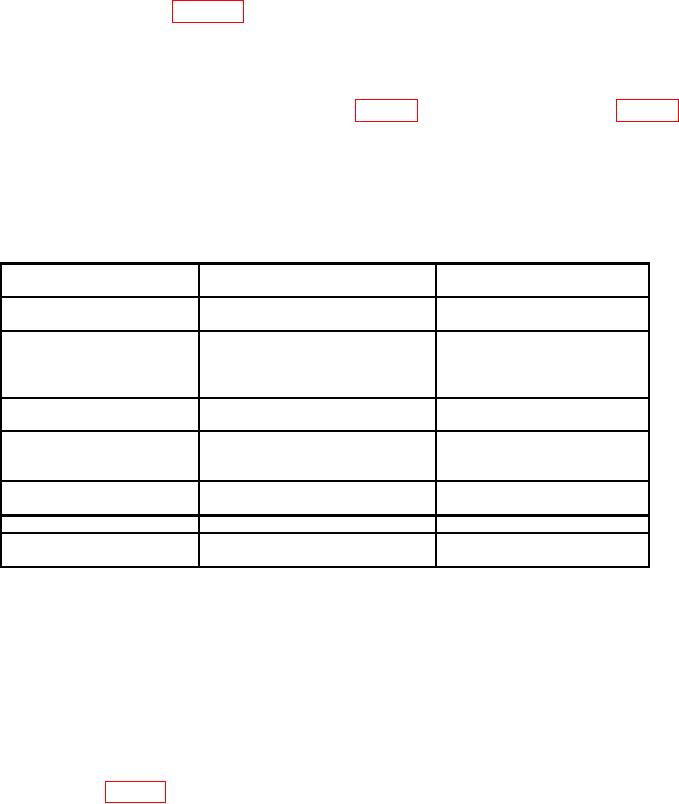
TB 9-6625-1973-24
EQUIPMENT REQUIREMENTS
calibration procedure. This equipment is issued with Secondary Transfer Calibration
Standards Sets AN/GSM-286, AN/GSM-287 or AN/GSM-705. Alternate items may be used
by the calibrating activity. The items selected must be verified to perform satisfactorily
prior to use and must bear evidence of current calibration. The equipment must meet or
provide a four-to-one ratio between the standard and TI. Where the four-to-one ratio
cannot be met, the actual accuracy of the equipment selected is shown in parenthesis.
5. Accessories Required. The accessories required for this calibration are common
usage accessories, issued as indicated in paragraph 4 above, and are not listed in this
calibration procedure.
Table 2. Minimum Specifications of Equipment Required
Common name and/or
Manufacturer, model,
(official nomenclature)
Minimum use specifications
and (part number)
AUTOTRANSFORMER
Range: 105 to 125 V ac
Ridge, Model 9020A
(9020A)
Accuracy: 1%
CALIBRATOR
Range: 1 to 1000 V dc
Fluke, Model 5720A (5720A)
(p/o MIS-35947)
Accuracy: 0.15%
Range: 100 kHz @ 100 mV rms
Accuracy: 3%
Range: 5 parts in 1010
FREQUENCY
Tracor, Model 527E
11
DIFFERENCE METER
(527E)
Resolution: 1 part in 10
FUNCTION GENERATOR
Frequency: 20 Hz to 50 MHz
Agilent, Model 33250A
Amplitude: 0 to 20 mV rms
(33250A)
Accuracy: 3%
Agilent, Model 3458A (3458A)
Range: 0 to 17 V dc
Accuracy: 1%
Sensitivity: 100 mV/cm at 1000 Hz
Agilent, OS-303/G (OS-303/G)
Datum, Model ET6000-75
TIME/FREQUENCY
Frequency: 1 MHz
9
(13589305)
WORKSTATION
Accuracy: 1 part in 10
CALIBRATION PROCESS
6. Preliminary Instructions
a. The instructions outlined in paragraphs 6 and 7 are preparatory to the calibration
process. Personnel should become familiar with the entire bulletin before beginning the
calibration.
b. Items of equipment used in this procedure are referenced within the text by common
name as listed in table 2.
c. Unless otherwise specified, verify the results of each test and, whenever the test
requirement is not met, take corrective action before continuing with the calibration.

